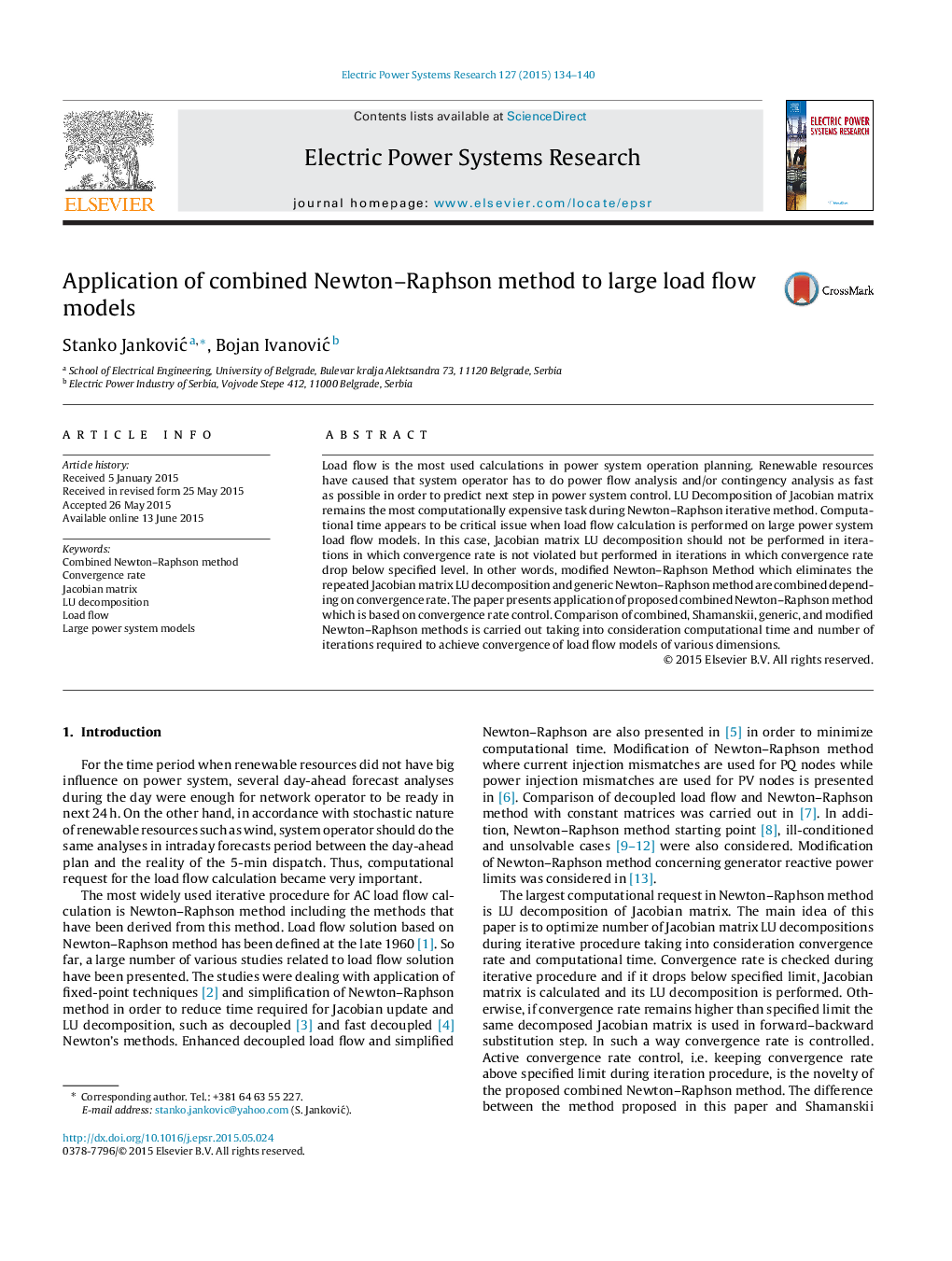| Article ID | Journal | Published Year | Pages | File Type |
|---|---|---|---|---|
| 704626 | Electric Power Systems Research | 2015 | 7 Pages |
•Combined Newton–Raphson method based on convergence rate control is proposed.•Comparative analysis of four Newton–Raphson methods is carried out.•Real and artificially made load flow models up to 20,000 buses were used.•The proposed method is trade off concerning calculation speed and convergence.
Load flow is the most used calculations in power system operation planning. Renewable resources have caused that system operator has to do power flow analysis and/or contingency analysis as fast as possible in order to predict next step in power system control. LU Decomposition of Jacobian matrix remains the most computationally expensive task during Newton–Raphson iterative method. Computational time appears to be critical issue when load flow calculation is performed on large power system load flow models. In this case, Jacobian matrix LU decomposition should not be performed in iterations in which convergence rate is not violated but performed in iterations in which convergence rate drop below specified level. In other words, modified Newton–Raphson Method which eliminates the repeated Jacobian matrix LU decomposition and generic Newton–Raphson method are combined depending on convergence rate. The paper presents application of proposed combined Newton–Raphson method which is based on convergence rate control. Comparison of combined, Shamanskii, generic, and modified Newton–Raphson methods is carried out taking into consideration computational time and number of iterations required to achieve convergence of load flow models of various dimensions.
